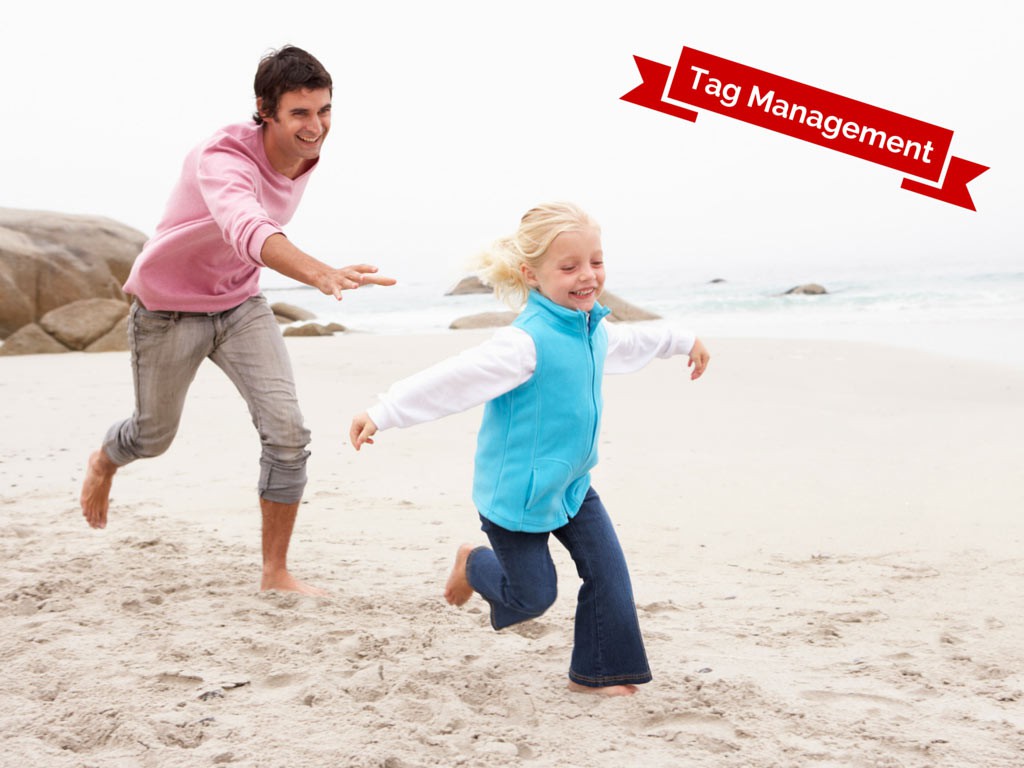Why Tag Management Should Be a Priority For Your Website
Tag! You’re it!
You just finished designing and launching a new website! What’s next?
The biggest difficulty a web analyst faces when launching a new site or app is getting proper tracking in place. Developers usually aren’t thrilled to add on-click codes and other tracking to all web pages as this is a labourious endeavour. Project managers also sometimes forget that tracking should be included in the scope of their project and, by the time they remember, the work has to be done within “not-so-friendly” deadlines…

Let’s be real. Tracking typically is not the #1 priority for most parties, which is a fallacy because it is so critical to understanding your online efforts. Is there a way to bring our fellow web-accomplices to this realization? Could we have more reliable data? Is a new implementation always going to be painful? Fear not! There is a simple way to get any tracking up and running in no time. Ladies and gentlemen, welcome to Tag Management!
What is a Container Tag?
Container tags are something “tired-of-being-thought-of-last” marketers invented. And thank goodness they did! Essentially, every element that tracking involves (conversion pixels, audience pixels, page view tags, custom scripts, etc.) can be held, or contained, in a simple and easy to implement tag. These are great because they have all of the javascript you would need to run your tags in a single file, referenced by the container. This makes implementation extremely easy for developers as they only need to add a few lines of the same code to every page and bam; it’s ready to go!
Advantages of Using a Container Tag
Still not convinced? Here are a few of the benefits that everyone can appreciate:
- Implementation costs go down! You don’t have to pay twice for any tracking implementation as the Analytics Specialist takes care of everything.
- Turnover time is diminished! Now that tag management is implemented, any tracking related updates to the site can all be accessed and implemented in a few clicks by the analyst.
- Testing is done in real-time! You can now see if everything is working as expected in real-time. No more back-and-forth with the developers.
- Everything is in one place! Ever found yourself searching endlessly for a particular tag? Now you can simply filter out elements from a list to find what you’re looking for with ease.
When to Use a Container Tag
This is the toughest question to answer… I would like to say “use it all the time”, but I know that’s not realistic. Here’s my personal recipe to understand when and if you should use a tag management solution and which one(s) you should you pick (yep, there are plenty of options out there).
- If your website only runs Google Analytics, don’t use a container tag.
- If you start adding goals or on-click codes to the mix and are running AdWords campaigns at the same time, Google Tag Manager is the best solution for you.
- If you run multiple Google products on your site (Double Click, Customer Surveys, Trusted Stores, etc.) or other major applications (AdRoll, Marin, AdOmetry, comScore, Crazy Egg or Turn, etc.), use Google Tag Manager.
- If you are running ads or a DSP that requires a separate conversion pixel and/or are running other programs that require specific setups, use a subscription-based solution.
Google Tag Manager (GTM)
GTM is great, as long as you play within the list of compatible vendors. Initially, GTM was only compatible with Google products, but the tech giant seems to have expanded its horizons lately. This is great news for us, as more and more product integrations will be coming into this free solution.
One complaint I have using this is as soon as you try to implement pixels that aren’t part of “the list”, this solution becomes very complex. It is possible, but takes a lot more knowledge and effort to get tags to fire properly. Also, as you can imagine, you don’t really have support from Google other than a community and training videos. Best of luck if you’re trying something fancy!
Subscription Based Solutions
Paid tag management products like Tealium, Signal, and Ensighten (to name only a few) bring a lot more to the table for folks like us by offering easy integrations with almost any product you can think of. This makes the implementation a breeze. Plus, you get a team dedicated to your account that are there to help you launch anything and everything in a timely manner. It sure helps to have product experts at your disposal to help you understand any issue you might be facing.
You’re It!
To conclude, you really need to consider launching a Tag Management Solution with your new projects. They add incredible value, save you time, and don’t slow your site down because they load asynchronously. At the end of the day, tag management will make everyone on your team happier and less stressed as you take care of the implementation. So don’t be afraid, take charge and get tagging!